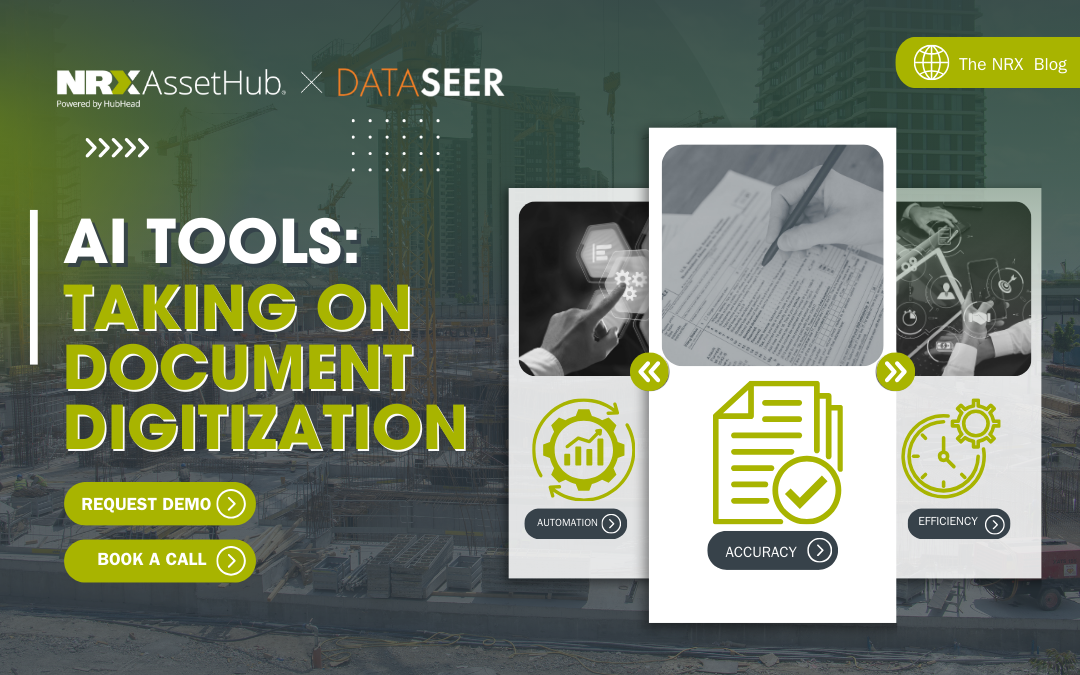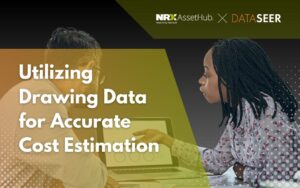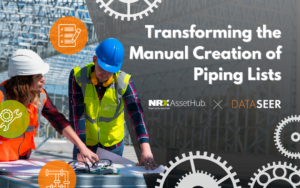In the world of asset management, transitioning from traditional paper-based systems to modern digital platforms is a necessary yet complex process. Digitizing legacy documents like P&IDs, equipment datasheets, and electrical schematics comes with its challenges. However, advances in artificial intelligence (AI) are making this transformation much more manageable. From automating data extraction to reducing human error, AI-powered tools offer a practical solution to these long-standing challenges. Here’s a look into how these tools are making a difference:
- Automating Data Extraction from Legacy Documents
One of the biggest barriers to digitizing legacy documents is the manual labor required to extract data from non-searchable scanned PDFs and paper-based files. AI-driven tools, particularly those leveraging machine learning and computer vision, can automate this process. These tools can recognize symbols, text, and line references on scanned documents and extract the data into usable formats like CSV or AutoCAD files.
For example, AI models can identify and label equipment tags, piping symbols, and process flow elements with a high degree of accuracy, even in older, poor-quality documents. This drastically reduces the time spent searching through pages of technical drawings. AI tools can achieve up to a 95% reduction in the time required for tasks like locating symbols or creating piping lists.
- Enhancing Accuracy and Reducing Human Error
Manual data extraction is prone to human error. Engineers tasked with digitizing complex diagrams must interpret and verify information, which can lead to mistakes. AI, on the other hand, can consistently perform these tasks without fatigue or oversight. These tools can also employ a “human-in-the-loop” approach, where AI performs the initial extraction, and human engineers simply verify the data, ensuring a high level of accuracy while reducing workload.
- Standardizing Data Across Projects
One of the most significant challenges in digitizing documents is the lack of consistent standards across different projects. Engineering drawings from various contractors or time periods often use different conventions for symbols, text styles, and layouts. AI tools are equipped with the ability to learn and recognize these variations through machine learning algorithms. These models can be trained on specific symbol libraries or customized to recognize non-standard symbols, providing a flexible solution to document standardization. This is particularly beneficial for companies dealing with both brownfield and greenfield projects, where variation in document formats is common. AI tools can adapt to a variety of document types, ensuring that all critical asset data is extracted and standardized, regardless of the document’s origin.
AI tools streamline the digitization process, making asset management more efficient and reliable.

- Reducing the Time and Cost of Digitization
AI tools are a game-changer when it comes to cutting down the time and cost associated with document digitization. Traditionally, converting hundreds of P&IDs or mechanical schematics into digital formats could take weeks or even months. However, AI tools can perform these tasks in a fraction of the time, allowing organizations to complete projects with fewer resources and at a lower cost.
By automating repetitive tasks, such as extracting table data or creating asset lists from technical drawings, AI not only saves time but also frees up engineers to focus on more critical tasks, like validating the extracted data or optimizing maintenance strategies. The result is a more efficient workflow that improves both the speed and quality of document digitization efforts.
- Facilitating Seamless Collaboration and Integration
AI tools don’t just solve data extraction problems—they also enhance collaboration across global teams and facilitate integration with existing enterprise systems. Many AI solutions come equipped with APIs that allow extracted data to be exported into formats that are compatible with Computerized Maintenance Management Systems (CMMS), Enterprise Asset Management (EAM) platforms, and other digital tools used in asset management.
Once AI tools have extracted relevant information from a P&ID, the data can be exported as a CSV file and uploaded directly into an asset management system, such as SAP Plant Maintenance or IBM Maximo. This seamless integration ensures that the digitized data is not only accessible but also actionable, enabling organizations to optimize their maintenance planning and decision-making processes.

- Improving Cost Estimation and Project Planning
In addition to improving the accuracy of digitization, AI tools play a crucial role in better cost estimation and project planning. When accurate data is extracted from technical documents, companies can make more informed decisions, leading to better cost estimates and reduced project overruns. AI tools can analyze extracted data in real time, providing valuable insights that can be used to refine cost models and optimize project timelines.
For example, rather than relying on outdated historical benchmarks, organizations can use AI tools to generate accurate, data-driven estimates based on the most recent asset information extracted from technical drawings. This leads to more precise project scopes and a higher likelihood of staying within budget and schedule constraints.

AI as a Catalyst for Digital Transformation
As organizations continue their digital transformation journeys, the role of AI tools in simplifying and accelerating document digitization cannot be overstated. From automating data extraction to improving accuracy and reducing costs, AI offers a comprehensive solution to the challenges associated with digitizing legacy documents. These tools not only streamline the process but also enhance collaboration, standardization, and integration with existing asset management systems.
By leveraging AI, companies can unlock the full potential of their asset data, enabling better decision-making, improved operational efficiency, and more accurate project planning. In short, AI is not just a tool for digitization—it’s a catalyst for transforming how businesses manage and maintain their critical assets in today’s fast-paced industrial landscape.
How Can We Help You?
HubHead and DataSeer’s AI Service combines human-level understanding with machine speed to build a scalable knowledge data store of engineering designs. By integrating these solutions with your existing EAM/CMMS systems and creating a digital twin, you can enhance decision-making and streamline your maintenance processes. Contact us for a free demo or book a call.
Utilizing Drawing Data for Accurate Cost Estimation
Transforming the Manual Creation of Piping Lists
The Tedious Nature of Creating Piping Lists Manually
Share this article




